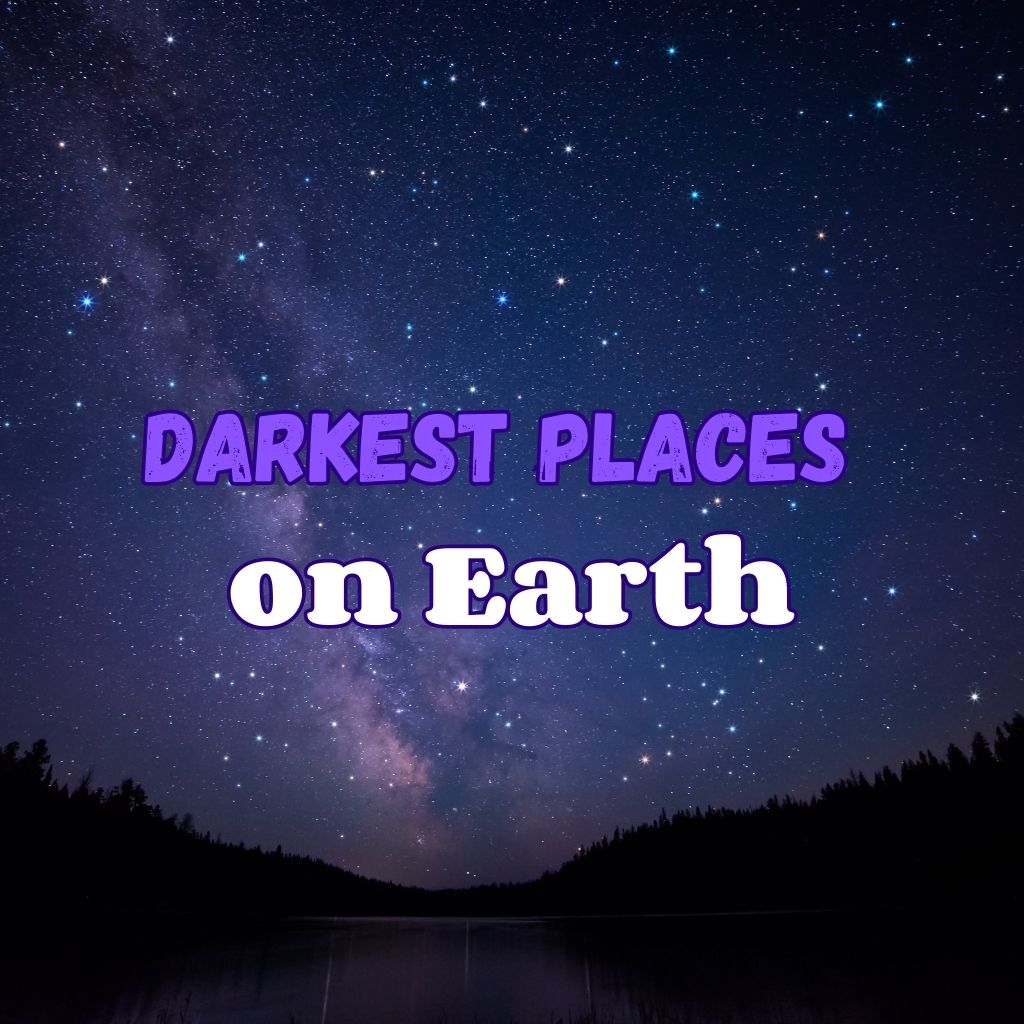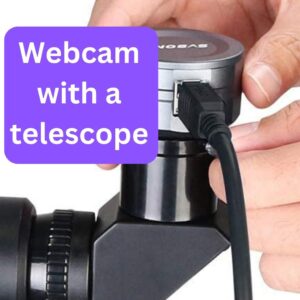This site contains affiliate links to products. I may receive a commission for purchases made through these links.
There are few experiences as humbling as staring up at the night sky and contemplating the vastness of the universe.
For many avid stargazers, however, the constant light pollution of cities and towns can make it difficult to fully appreciate the celestial wonders above.
This is where the darkest places on Earth come in. These remote and often foreboding locations offer an unparalleled stargazing experience, with crystal-clear views of the Milky Way and other celestial phenomena.
But for those brave enough to venture to these remote locations, the reward is an unforgettable stargazing experience that will amaze you.
In this article, we’ll take a look at some of the darkest places on Earth that offer incredible stargazing opportunities.
1. Atacama Desert, Chile
The Atacama Desert is located in northern Chile and is one of the driest and most remote places on Earth. Its high altitude, clear skies, and minimal light pollution make it an ideal location for astronomical observations.
The desert is home to several observatories, including the Atacama Large Millimeter Array (ALMA), which is the world’s largest radio telescope.
The observatory takes advantage of the desert’s dry climate and clear skies to study the origins of the universe, black holes, and other astronomical phenomena.
2. Aoraki Mackenzie International Dark Sky Reserve, New Zealand
Aoraki Mackenzie International Dark Sky Reserve, New Zealand, is located on the South Island of New Zealand and is one of the best stargazing locations in the world.
The reserve covers over 4,300 square kilometers and is home to some of the darkest skies in the Southern Hemisphere.
With minimal light pollution and clear skies, the reserve offers unparalleled night sky views, including the Southern Cross, Magellanic Clouds, and Milky Way.
3. Cherry Springs State Park, Pennsylvania, USA
Cherry Springs State Park is located in rural Pennsylvania and is known for its exceptionally dark skies. The park has strict lighting regulations to prevent light pollution and is home to several stargazing events throughout the year.
Visitors can view the night sky with their naked eyes or through telescopes provided by the park. The park’s remote location and dark skies make it a prime location for astrophotography.
You can also go with your own telescope. We recommend Orion StarBlast 4.5 Astro Reflector Telescope. This is a tabletop telescope that is lightweight and easy to transport.
It has a 4.5-inch aperture and a 450mm focal length, which makes it great for observing celestial objects like the Moon, planets, and stars.
The telescope comes with a carry case for easy transport and storage.
Celestron NexStar 6 SE Telescope is another great choice. This is a larger telescope than the Orion StarBlast, but it’s still relatively compact and portable. It has a 6-inch aperture and a 1500mm focal length, which makes it great for observing a wide range of celestial objects.
While it’s a bit larger and heavier than the Orion StarBlast, the Celestron NexStar 6 SE is still relatively portable and easy to set up and use in a dark night sky location.
You may also like: Orion Starblast Telescopes (All Models Explained)
4. NamibRand Nature Reserve, Namibia
The NamibRand Nature Reserve is a privately owned reserve in Namibia, Africa, and is one of the largest privately owned nature reserves in Africa.
The reserve covers over 200,000 hectares and is located in a remote area with minimal light pollution. Visitors can experience the reserve’s dark skies by taking a guided stargazing tour, which includes the use of telescopes and binoculars.
The reserve’s location in the Southern Hemisphere also provides unique views of the night sky, including the Southern Cross and Magellanic Clouds.
5. Natural Bridges National Monument, Utah, USA
Natural Bridges National Monument is located in the deserts of southern Utah and is known for its three natural bridges, which are formed by erosion over millions of years.
The park has some of the darkest skies in the United States and is home to several stargazing events throughout the year.
Visitors can participate in a ranger-led stargazing program or explore the night sky on their own.
The park’s location in a desert environment also provides unique views of the night sky, including the zodiacal light and the Andromeda Galaxy.
You may also like: How Good of a Telescope Do I Need to See Andromeda?
6. Death Valley National Park, California, USA
Death Valley National Park is one of the hottest and driest places on Earth, with little rainfall and minimal light pollution. The park is home to several astronomical observatories and is a popular spot for stargazing.
Visitors can participate in a stargazing program. The park’s remote location and dark skies make it an ideal location for astrophotography.
You may also like: 15 Best Telescopes for Astrophotography (Full Guide)
7. Teide National Park, Tenerife, Spain
Teide National Park is located on the island of Tenerife in the Canary Islands and is home to one of the world’s largest solar observatories.
The park’s high altitude and clear skies make it an ideal location for stargazing, with several stargazing tours and events offered throughout the year.
Visitors can explore the night sky with the use of telescopes and binoculars provided by the park.
8. Mauna Kea Observatory, Hawaii, USA
Mauna Kea is a dormant volcano on the Big Island of Hawaii, home to one of the world’s most advanced astronomical observatories.
At an elevation of 13,803 feet, it is the highest point in Hawaii and one of the best places for stargazing. The observatory is home to 13 telescopes operated by 11 countries, including the world’s largest optical and infrared telescopes.
Visitors can take a guided stargazing tour or participate in a stargazing program offered by the observatory.
The location’s high altitude and clear skies provide excellent conditions for stargazing, with views of the Milky Way, distant galaxies, and nebulas.
9. Galloway Forest Park, Scotland
Galloway Forest Park is located in southwestern Scotland and is one of the best places for stargazing in the United Kingdom. The park was designated as the UK’s first Dark Sky Park in 2009 by International Dark Sky Association, with over 75% of its land protected from light pollution.
Visitors can take advantage of the park’s dark skies by participating in one of the many stargazing events offered throughout the year. The park’s location in a rural area also provides unique views of the night sky, including the aurora borealis.
10. Brecon Beacons National Park, Wales
The Brecon Beacons National Park is located in South Wales and is another designated Dark Sky Reserve, making it an ideal location for stargazing.
Visitors can participate in a guided stargazing tour or explore the night sky on their own.
11. Yaeyama Islands, Japan
The Yaeyama Islands are located in the southernmost part of Japan and are one of the best stargazing destinations in the country. The islands are known for their clear skies and minimal light pollution, making them ideal for viewing the night sky.
Visitors can take a boat tour to some of the uninhabited islands for a truly isolated stargazing experience.
The islands also have several observatories, such as the Hateruma Observatory, where visitors can learn more about astronomy and the stars.
12. Luang Prabang, Laos
Luang Prabang, located in northern Laos, is known for its beautiful natural beauty and rich cultural heritage. However, it is also one of the best places for stargazing in Southeast Asia.
The town is in a valley surrounded by mountains, which helps block out light pollution and create clear skies.
Visitors can take a guided stargazing tour or venture out on their own to view constellations like the Big Dipper, Orion, and the Southern Cross.
13. Koh Kood, Thailand
Koh Kood, located in the Gulf of Thailand, is one of Thailand’s most secluded and unspoiled islands. The island is known for its pristine beaches and crystal-clear waters, but it is also a great destination for stargazing.
Visitors can take a nighttime boat tour to view the stars or simply lay on the beach and gaze up at the night sky.
Koh Kood’s lack of development means that light pollution is minimal, making it one of the best stargazing destinations in Thailand.
14. Yeongyang, South Korea
Yeongyang is a small town located in the mountainous region of Gyeongsangbuk-do province in South Korea. The town is known for its beautiful natural scenery and is one of the best places in the country for stargazing.
Visitors can take a nighttime tour to view the stars or explore the town’s many hiking trails for a unique stargazing experience.
Yeongyang’s remote location and minimal light pollution provide an excellent opportunity to view the Milky Way and other celestial wonders.
15. River Murray Dark Sky Reserve, SA
The River Murray Dark Sky Reserve is located in the Riverland region of South Australia and covers an area of over 3,200 square kilometers.
The reserve is known for its dark skies, which are free from light pollution, making it an excellent location for stargazing.
Visitors can take a guided tour to learn about the stars and constellations visible in the southern hemisphere, including the Southern Cross and the Magellanic Clouds.
16. Warrumbungle National Park, Australia
Warrumbungle National Park, located in New South Wales, Australia, is a renowned stargazing site that attracts astronomers and stargazers from all over the world.
The park is located in a remote area, far from any major cities or towns, which makes it an ideal location for stargazing.
It is also recognized as Australia’s first Dark Sky Park, a designation given by the International Dark Sky Association to places that preserve the natural darkness of the night sky by reducing light pollution.
17. The Jump-Up, Queensland, Australia
The Jump-Up is a geological formation located in Outback Queensland, Australia. This region is known for its pristine night skies, free from any light pollution.
The Jump-Up is a popular stargazing site due to its remote location and clear skies. Visitors can camp at nearby campgrounds and enjoy panoramic views of the Milky Way galaxy, constellations, and shooting stars.
You may also like: Circumpolar Stars: Finding & Identifying These Celestial Gems
18. Bindoon, Western Australia
Bindoon is a small town located in the Perth Hills region of Western Australia. The area is known for its dark skies and low levels of light pollution, making it an ideal location for stargazing.
Visitors can enjoy stargazing from various locations, including the local golf course, the Bindoon Observatory, and the surrounding farmland.
The Bindoon Observatory offers guided stargazing tours and provides visitors with a unique opportunity to view the night sky through its telescopes.
19. East Point Reserve, Northern Territory
East Point Reserve is a public park located in Darwin, Northern Territory, Australia. The park is situated on a hill that overlooks the city and offers panoramic views of the night sky.
Visitors can enjoy stargazing from the park’s picnic areas or attend one of the regular stargazing events hosted by the Darwin Astronomy Group.
The group provides telescopes and expertise to help visitors identify celestial objects and learn about the night sky.
20. Snake Valley, Victoria, Australia
Snake Valley is a small rural town located in Victoria, Australia. The town is known for its clear skies and low levels of light pollution, making it an excellent location for stargazing.
Visitors can camp at nearby campgrounds or enjoy stargazing from various locations in the town, including the Snake Valley Hotel and the town’s cricket oval.
The Snake Valley Astro Camp is a popular stargazing event held annually in the town and attracts stargazers from all over the country.
21. Taroona, Tasmania, Australia
Taroona is a small coastal town located in southern Tasmania, Australia. The town is known for its beautiful natural beauty and pristine night skies.
Visitors can enjoy stargazing from various locations in the town, including Taroona Beach and the Alum Cliffs Reserve.
The Southern Stars Stargazing Tour is a popular guided stargazing tour that takes visitors on a journey through the night sky, identifying constellations, planets, and other celestial objects.
22. Hortobágy National Park, Hungary
Hortobágy National Park is located in eastern Hungary and is known for its vast grasslands, wildlife, and clear night skies. The park offers several stargazing events throughout the year, including guided tours and astronomical observations.
You can enjoy stargazing from various locations within the park, including the Hortobágy Observatory, which features a large telescope and expert guides who provide insight into the night sky.
23. Clayton Lake State Park, New Mexico
Clayton Lake State Park is located in northeastern New Mexico, USA. The park is known for its dark skies and is designated as an International Dark Sky Park.
Visitors can enjoy stargazing from various locations within the park, including the park’s campground, which offers panoramic views of the night sky.
The park also hosts regular stargazing events and provides telescopes and guidance to help visitors identify celestial objects.
24. Pic du Midi International Dark Sky Reserve, France
The Pic du Midi International Dark Sky Reserve is a protected area located in the French Pyrenees. The reserve covers an area of 3,000 square kilometers.
It is home to the Pic du Midi Observatory, which sits at an elevation of 2,877 meters and is one of the best places in the world for stargazing.
You can take a cable car to the summit and enjoy beautiful views of the night sky through a range of telescopes and other observation equipment.
25. Mont-Mégantic International Dark Sky Reserve, Canada
Mont-Mégantic International Dark Sky Reserve is a protected area located in Quebec, Canada.
The reserve is home to the Mont-Mégantic Observatory, which sits at an elevation of 1,105 meters and is one of the best places in the world for stargazing.
26. Northumberland Dark Sky Park, UK
Northumberland Dark Sky Park is a protected area located in Northumberland, UK. It covers an area of 572 square kilometers. The park is known for its beautiful landscapes, including the Cheviot Hills and the Northumberland coast.
It is also home to several historic sites, including Hadrian’s Wall and the Holy Island of Lindisfarne. You can take part in guided stargazing events, as well as enjoy other outdoor activities such as hiking and cycling.
27. Sagarmatha National Park, Nepal
Sagarmatha National Park is located in northeastern Nepal and is home to some of the world’s highest peaks, including Mount Everest. The park is known for its rugged mountain landscapes, glaciers, and unique cultural heritage.
Visitors to the park can explore the many hiking trails that wind through the mountains and valleys, including the famous Everest Base Camp Trek.
Along the way, visitors can experience the traditional Sherpa culture and visit historic monasteries. The park is also a great location for stargazing, with clear skies and minimal light pollution.
28. Uluru, Australia
Uluru, also known as Ayers Rock, is a large sandstone rock formation located in the heart of Australia’s Red Centre. The site is sacred to the local Anangu people, who have lived in the area for tens of thousands of years.
Visitors to Uluru can explore the hiking trails that wind around the base of the rock and learn about the traditional culture and stories associated with the site.
The park is also a great location for stargazing, with minimal light pollution and clear skies.
Visitors can participate in a range of stargazing programs and events throughout the year.
29. Great Basin National Park, Nevada, USA
Located in eastern Nevada, Great Basin National Park is a popular destination for stargazing enthusiasts due to its high elevation, remote location, and clear skies.
The park is home to the Great Basin Observatory, which features a state-of-the-art 0.7-meter telescope for astronomical research and education.
Visitors can participate in ranger-led stargazing programs, attend astronomy-themed events, or simply enjoy the park’s dark skies on their own.
The park’s Lehman Caves also offer a unique underground stargazing experience, where visitors can observe the celestial bodies through a natural skylight.
30. North Cascades National Park, Washington, USA
North Cascades National Park in Washington State offers a unique stargazing experience due to its remote location, minimal light pollution, and pristine wilderness.
Visitors can observe the Milky Way and other celestial objects from various locations throughout the park, including the Cascade Pass Trail, Washington Pass Overlook, and Colonial Creek Campground.
Ranger-led stargazing programs are also available during the summer months.
The park is also home to the Ross Lake National Recreation Area, which offers additional stargazing opportunities and amenities such as campgrounds, boat ramps, and hiking trails.
31. Great Sand Dunes National Park, Colorado, USA
Great Sand Dunes National Park in Colorado is a popular destination for stargazing due to its high elevation and lack of light pollution. The park’s remote location and high altitude provide optimal viewing conditions for observing the Milky Way and other celestial objects.
Visitors can attend astronomy-themed events or simply enjoy the park’s dark skies.
The park also offers a unique opportunity to observe the night sky from the top of the park’s tallest sand dune, where visitors can enjoy panoramic views of the surrounding landscape and the stars above.
32. Big Bend National Park, West Texas, USA
Big Bend National Park, located in West Texas, is known for its dark skies and remote location, making it an excellent spot for stargazing.
The park has several designated stargazing areas, including the Chisos Basin and the Rio Grande Village.
The park also offers a limited number of backcountry camping permits, which allow visitors to stargaze in more secluded areas of the park.
33. Grand Canyon National Park, Arizona, USA
Grand Canyon National Park, located in Arizona, is another popular stargazing location. The park has several designated stargazing areas, including Desert View and Yavapai Point.
The park offers several stargazing programs, including telescope viewings and astronomy talks.
Visitors can also attend the annual Grand Canyon Star Party, which brings together astronomers and stargazers worldwide for a week-long celebration of the night sky.
34. Scottish Dark Sky Observatory, Dalmellington, Ayrshire, Scotland.
The Scottish Dark Sky Observatory, located in Scotland’s Galloway Forest Park, is a popular destination for stargazers. The observatory is situated in a remote location, far from any major sources of light pollution.
Visitors can attend guided stargazing sessions led by experienced astronomers, as well as lectures and workshops on astronomy and astrophotography.
The observatory also has several telescopes and cameras available for public use.
35. Rainbow Bridge National Monument, Utah, USA
Rainbow Bridge National Monument, located in Utah, is known for its spectacular natural arch, as well as its dark skies. The monument has several designated stargazing areas, including the Rainbow Bridge Overlook and the Lake Powell Resort.
Visitors can attend night sky programs offered by the park, which include telescope viewings and guided tours of the night sky.
The park also offers several stargazing cruises on Lake Powell, which provide a unique opportunity to stargaze from the water.
FAQs about the darkest places on earth
Here are the answers to some frequently asked questions about the darkest places on earth
Which place in Africa is considered the darkest?
The NamibRand Nature Reserve in Namibia is considered to be one of the darkest places in Africa. The reserve is located in a remote area of the Namib Desert, which is known for its clear skies and lack of light pollution.
The reserve has implemented strict lighting regulations to protect its dark skies and is home to an astronomical observatory.
What place is considered the darkest in America?
Cherry Springs State Park in Pennsylvania is considered to be one of the darkest places in America. The park is located in a remote area of the state.
The park is also home to several stargazing events throughout the year, including the annual Cherry Springs Star Party.
Which country has the darkest night sky?
The country with the darkest night sky is generally considered to be Namibia. The country has implemented strict lighting regulations and is home to several designated dark sky reserves and parks, including the NamibRand Nature Reserve.
Is there any place on Earth with zero light pollution?
There is no place on Earth with zero light pollution, as even the most remote and unpopulated areas still experience some level of light pollution from natural sources such as the moon and stars.
However, some of the darkest places on Earth include the Atacama Desert in Chile. It has the least light pollution.
Takeaway: Enjoy the dazzling night sky with minimal light pollution in the darkest places on earth
These locations offer some of the best opportunities for stargazing and experiencing the beauty of the night sky.
Whether it’s exploring the vast grasslands and wetlands of Hortobágy National Park in Hungary, discovering dinosaur footprints at Clayton Lake State Park in New Mexico, or marveling at the natural bridges and canyonlands of Natural Bridges National Monument in Utah, each of these locations offers unique experiences and breathtaking views of the stars.
Don’t forget to subscribe to our newsletter where you’ll find the latest cosmic discoveries, expert stargazing tips, and exclusive subscriber deals. Embark on your cosmic journey if you haven’t already!
You may also like:









